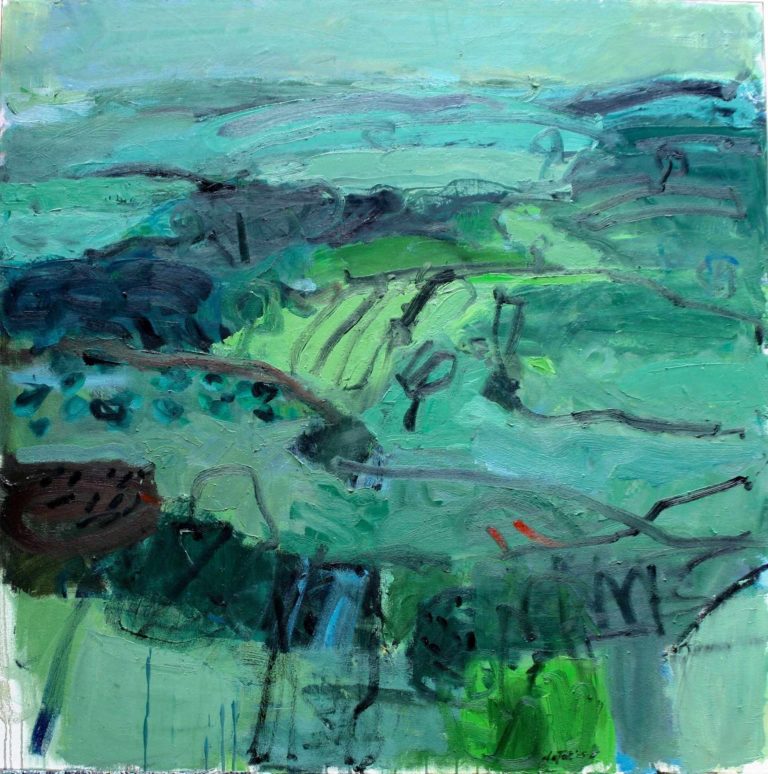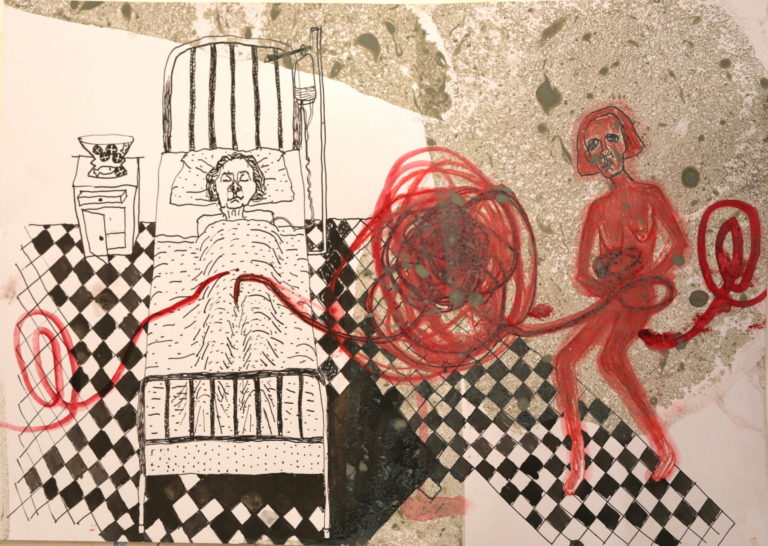In June I drove to Whitstable for my first sitting with Lucy Howarth, an author and curator who has become an authority on the British Constructivist Marlow Moss. The weather had turned for the worse, so thankfully I wasn’t competing with too many tourists on my way to the south coast. On the other hand, Lucy had warned me that parking might be an issue in Whitstable’s charming old quarter. And it was an issue, though mainly because I cannot park. By my third attempt at backing into a spot, and still finding myself in the middle of the road, half the street had come out to help me.

In June I drove to Whitstable for my first sitting with Lucy Howarth, an author and curator who has become an authority on the British Constructivist Marlow Moss. The weather had turned for the worse, so thankfully I wasn’t competing with too many tourists on my way to the south coast. On the other hand, Lucy had warned me that parking might be an issue in Whitstable’s charming old quarter. And it was an issue, though mainly because I cannot park. By my third attempt at backing into a spot, and still finding myself in the middle of the road, half the street had come out to help me.
Lucy’s partner, a comic artist, kindly took their two boys to the cinema to give us some space. As we passed through the house, I noted that these children were serious Lego aficionados. Their elaborate constructions were something to behold.
The sitting prompted some valuable reflections on the nature of symbolism. I invited all of the authors in the series to choose an item of special meaning to include in their portrait. Lucy draped a green plaid blanket over the back of her chair, a favourite by Margo Selby. It was only later that she realised there were numerous other significant objects in the composition: the chair she had nursed her children in as infants, the bright hand-woven rug she and her husband had bought for each other the last Christmas, the gold rings that once belonged to her grandmother and great aunt. This led her to observe that symbolism is not just something chosen for an image; sometimes the image is what allows us to recognise something as symbolic.
The drawing did not go well. I found neither the solid concentration nor the serendipitous placement of marks needed for a successful study. This happens from time to time, though I can’t say why. Lucy noticed I had given her a slouching posture, a real rookie mistake that I made sure to correct in my second attempt. But I did enjoy drawing the angular form of the chair and the pattern on the blanket. Given Lucy’s involvement with Marlow Moss, I thought these geometric elements would be very appropriate.
Afterwards we walked on the wide shingle beach near Lucy’s house. The sea was calm, with banks of oysters protruding from the water like piano keys. Lucy’s husband dutifully texted asking if he could come home yet.
Seven months later, the portrait was moving in and out of the finished pile. Lucy couldn’t make it to my studio for a second sitting, so I only had my drawings and photo references to work with. I sensed the painting wasn’t finished, but didn’t know how it could be improved. One issue was the background. After starting with mint green and oxide green, I tried lilac, which instantly gave the portrait a different feeling. But this started to look sickening, so I added Indian red and viridian. At this point I had to turn the painting around and tell myself to leave it for at least a week. Sometime later, the background had become blue. It still didn’t work.
So I started to rethink the composition in stead. What if I balanced the white cushion on the chair with a white shape in the background? Looking at the photo reference again, it occurred to me that lines and shapes resembling an interior would give a more intimate sense of enclosed space.
This was a satisfying solution, as it recalled one of my original aims in this portrait series. I usually prefer to paint a figure with little more than an interesting chair, a good pose and creative use of colour. In this project, I wanted the authors to define themselves with their choice of setting – to own the space in which I represented them – even if this made it more challenging to work out a composition.
But I wasn’t happy with the face either. My attempts at more confident brushwork faltered as Lucy’s image faded from my mind’s eye. Her features were too dark in my photographs, the focus too soft, to identify the structuring elements I rely on so heavily. I knew from experience that a single face, in fact, contains many faces. As you paint a person over and over again, multiple likenesses emerge, each one different but a likeness all the same. What I was looking for here was the face that captured how I saw her, how I felt towards her, and how I saw myself in relation to her. And this is what I could not find, so I decided a second sitting was imperative.
Exactly a year after our first meeting, I was driving to Whitstable again on a hot afternoon. The road was framed with the deep greens of summer, the hemlock a white foam under rows and rows of poplars. Lucy had moved to the outskirts of town in search of more space, which was good news for me since I could now park in the driveway. She had an easel ready for the sitting, a legacy of her days as an art student, and on the mantelpiece were three of her own paintings she had found while digging it out.
Arranging this extra sitting was definitely worthwhile. I completely repainted Lucy’s face, and reimagined the background too. In addition to the chair and rug from our first sitting, Lucy was now sitting in front of a plant whose leaves reached gently into the space behind her shoulder. Seeing this new element in the composition, I knew straight away my problems with the painting were solved.



